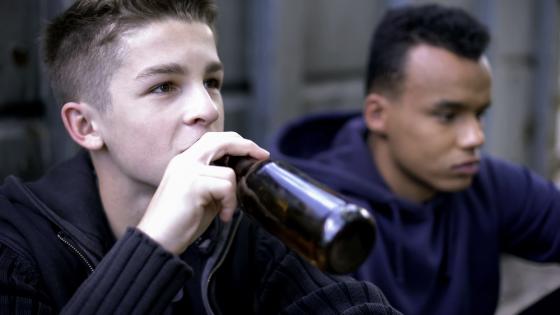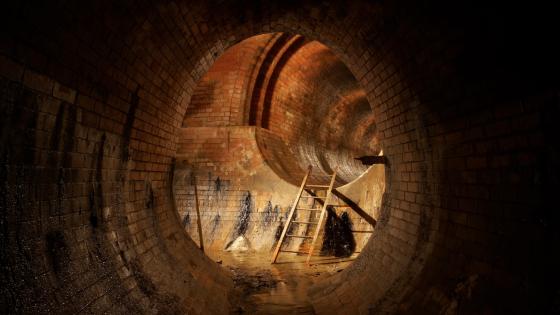It is a truth universally acknowledged – at least among US college students – that heavy alcohol consumers are substantially more likely to be having sex. For instance, nationally representative survey data from 1995 on 18- to 24-year-old unmarried students at four-year colleges, 46% of whom regularly engaged in binge drinking (i.e. consumed five or more alcoholic beverages in a single episode) over the previous month, revealed that 68% of binge drinkers had sex over the previous three months and 25% of the sexually active did so with at least two different partners, while comparable rates for non-binge drinking students were 54% and 12%. This strong correlation, coupled with the seemingly obvious mechanism of intoxication, leads many observers to conclude that the causal nature of the relationship, in the direction from drinking to sex, is so obvious that they wonder why an academic (let alone an economist) would bother studying it.
Beyond confidence in our theories’ ability to explain all types of behaviours, even those not directly involving monetary outcomes, many forays by economists into topics that have traditionally fallen outside their domain emanate precisely because of our suspicions that many co-occurring outcomes do not reflect causal relationships. In fact, some economists are equally puzzled as to why colleagues would study this issue for precisely the opposite reason. It seems to them that binge drinkers are more sexually active purely because they are different in other ways from those who do not binge drink, rather than because of binge drinking itself.
Although economists have been studying this topic for over a decade, obtaining convincing evidence on causality has proven difficult. One strand of research has estimated the reduced form relationship between alcohol-related policies, such as beer taxes, minimum legal drinking ages and zero tolerance drunk driving laws, and two particular outcomes of unprotected sex, rates of STDs (specifically gonorrhoea and syphilis) and births (or abortions) in US state panel data (see Carpenter 2005, Chesson et al. 2000, Dee 2001, Sen 2003). Results typically show that more restrictive alcohol policies reduce STD, birth, and abortion rates – at least for some age and racial groups. These studies, however, do not directly observe drinking and sexual behaviour.
Others who do analyse behavioural data have attempted to identify the relationship using factors that exogenously shift drinking without otherwise affecting sexual activity, i.e. instrumental variables (see Averett et al. 2004, Grossman et al. 2005, Rees et al. 2001, Sen 2002). These studies tend to yield estimates that are unrealistically large, yet still statistically imprecise, or that are paradoxically much larger for general alcohol use than the specific types of heavy drinking expected to induce unplanned sex. These estimates suggest instrument inadequacy, and indeed Rashad & Kaestner (2004) criticised the two studies published at the time for using instruments that were both weak predictors of drinking and likely to be separately related with sexual behaviour. Instrument sets have insufficient explanatory power for alcohol use to precisely identify reasonable-sized effects, or even to imply a substantial reduction in bias relative to estimates that do not take omitted correlates into account.
Perhaps the most credible evidence on the direct behavioural relationship comes from Grossman et al. (2004), who analysed the relationship between changes over time in drinking status and sexual activity. Yet results differ in the two data sets examined, and as the authors acknowledge, unobserved factors that vary temporally and are correlated with both drinking and sexual behaviour could bias their estimates.
New insight on binge drinking and sexual behaviour
These limitations, along with the fact that none of the previous work focused on college students, motivated my study of 1,272 respondents from the aforementioned National College Health Risk Behaviour Survey (DeSimone 2010). My approach differs from earlier studies of individual-level data, in that I take advantage of extensive information on risky behaviours of survey participants by simply holding constant proxies for many specific difficult to observe covariates are likely to affect both drinking and sexual activity.
Consider the observation that students who binge drank in the past month are about 25% more likely than others to report having sex in the past three months without using a condom (which assumes past month alcohol use reflects consumption over the previous two months as well), conditioning on school attended and other basic demographic and background characteristics. Simply holding constant one additional variable, the age at which students first had sex (coded to current age for virgins), completely eliminates this differential rate of unprotected sex by binge drinking status. It is not the case, therefore, that inebriated students have sex without condoms when they would not have done so if they had stayed sober. Rather, students who start having sex earlier in life are simply the ones more likely to both binge drink and have sex without condoms, and this is why the two behaviours are connected.
The story is similar for having any sex during this time. Binge drinkers initially appear 30% more likely to have sex, but this difference falls to 10% after accounting for age of their first sexual encounter, and a statistically negligible 3% upon further adjusting for age of their first drink and previous substance use. While these results do not eliminate the possibility that sexual activity is linked to alcohol use through a more complex mechanism that evolves over time, they cannot be explained by a contemporaneous impact of binge drinking.
In contrast, even after adjusting for the above factors and additional measures of preferences towards sexual activity, risk aversion, mental health and sports participation, the association between binge drinking and promiscuous sex, defined as having at least two partners over the past three months, remains quite large. This is also true for promiscuity accompanied by not always using a condom, which places participants at particular risk for STD infection and, seemingly, unplanned pregnancy. Specifically, binge drinkers remain 50–60% more likely to engage in promiscuous sex, with or without always using protection, even when holding constant all of the aforementioned potential confounders.
Of course, the burden of proof for establishing causation in this manner is much higher than for dismissing it. One can always claim that there is a contaminant lurking in the weeds for which I cannot account. This motivates several robustness checks. First, I show that a variable indicating non-binge alcohol use has no relationship with promiscuity. When I then break out binge drinking into two variables based on whether past month binge drinking occurred exactly once or more often, multiple-episode binge drinkers are nearly twice as likely as non-drinkers to engage in promiscuous sex, whereas the impact of single-episode binging is still sizable but somewhat smaller. Both results are expected if binge drinking truly causes promiscuous sex rather than merely being spuriously correlated with it.
Second, akin to the earlier-described studies of individual behaviour, I pursue an instrumental variables strategy in which the effect of binge drinking is identified by factors predicted to strongly influence drinking but otherwise have no relationship with sexual activity. Importantly, these instruments (indicators of ever having used cigarettes, marijuana, cocaine and other illegal drugs) are selected purely because of observed strong associations with binge drinking and, holding constant binge drinking, lack of association with promiscuity. The estimated impacts of binge drinking are as large or larger using this methodology as in the baseline model.
Third, I incorporate information on whether students used alcohol or drugs before the last time they had sex, which is strongly associated with promiscuity. Accounting for this shrinks the effect of binge drinking, and the decline is more extreme when the sample is restricted to students reporting that their last sexual encounter did not involve alcohol or drugs. Moreover, binge drinking is very highly correlated with having used alcohol or drugs before the last episode of sex. Although none of these revelations are particularly earth-shattering, they would seem a necessary condition for making the claim that binge drinking induces promiscuity.
My study makes three additional observations. Judging by a sizable association between binge drinking and promiscuity in conjunction with having used the pill recently, some binge drinking-induced promiscuity, especially among males, seems to occur among students involved in long-term relationships. Effects are not apparent among two-year college students, who differ from four-year college students in many ways including living arrangements (although the models control for this). Finally, effects are concentrated among non-Hispanic whites.
I conclude that binge drinking does not make students become sexually active when they would not otherwise be, but does leads to some promiscuous sex that would not otherwise take place. This implies STD infection and unwanted pregnancy are potential external costs of binge drinking that could justify restrictive alcohol policies on college campuses. Nonetheless, regulations motivated by this result could conceivably invoke higher costs from other external effects of binge drinking, such as policies that have the effect of moving drinking off-campus and thus increasing drunk driving.
To further explore this subject I am currently investigating whether similar results are obtained in two more recent and substantially larger samples, one a different group of four-year college students and the other a set of high school students.
References
Averett, Susan L., Daniel I. Rees, Brian Duncan & Laura Argys, “Race, Ethnicity, and Gender Differences in the Relationship between Substance Use and Adolescent Sexual Behaviour,” Topics in Economic Analysis & Policy, 2004, 4(1), Article 22.
Carpenter, Christopher, “Youth Alcohol Use and Risky Sexual Behaviour: Evidence from Underage Drunk Driving Laws,” Journal of Health Economics, May 2005, 24(3), 613–628.
Chesson, Harrell, Paul Harrison & William J. Kassler, “Sex under the Influence: The Effect of Alcohol Policy on Sexually Transmitted Disease Rates in the US,” Journal of Law and Economics, April 2000, 43(1), 215–238.
Dee, Thomas S., “The Effects of Minimum Legal Drinking Ages on Teen Childbearing,” Journal of Human Resources, Fall 2001, 36(4), 823–838.
DeSimone, Jeff, “Binge Drinking and Risky Sex among College Students,” NBER Working Paper 15953, April 2010.
Grossman, Michael, Robert Kaestner & Sara Markowitz, “Get High and Get Stupid: The Effect of Alcohol and Marijuana Use on Teen Sexual Behaviour,” Review of Economics of the Household, December 2004, 2(4), 413–441.
Grossman, Michael & Sara Markowitz, “I did What Last Night?! Adolescent Risky Sexual Behaviours and Substance Use,” Eastern Economic Journal, Summer 2005, 31(3), 383–405.
Rashad, Inas & Robert Kaestner, “Teenage Sex, Drugs and Alcohol Use: Problems Identifying the Cause of Risky Behaviours,” Journal of Health Economics, May 2004, 23(3), 493–503.
Rees, Daniel I., Laura M. Argys & Susan L. Averett, “New Evidence on the Relationship between Substance Use and Adolescent Sexual Behaviour,” Journal of Health Economics, September 2001, 20(5), 835–845.
Sen, Bisakha, “Does Alcohol Use Increase the Risk of Sexual Intercourse among Adolescents? Evidence from the NLSY97,” Journal of Health Economics, November 2002, 21(6), 1085–1093.
Sen, Bisakha, “Can Beer Taxes Affect Teen Pregnancy? Evidence Based on Teen Abortion Rates and Birth Rates,” Southern Economic Journal, October 2003, 70(2): 328–343.


